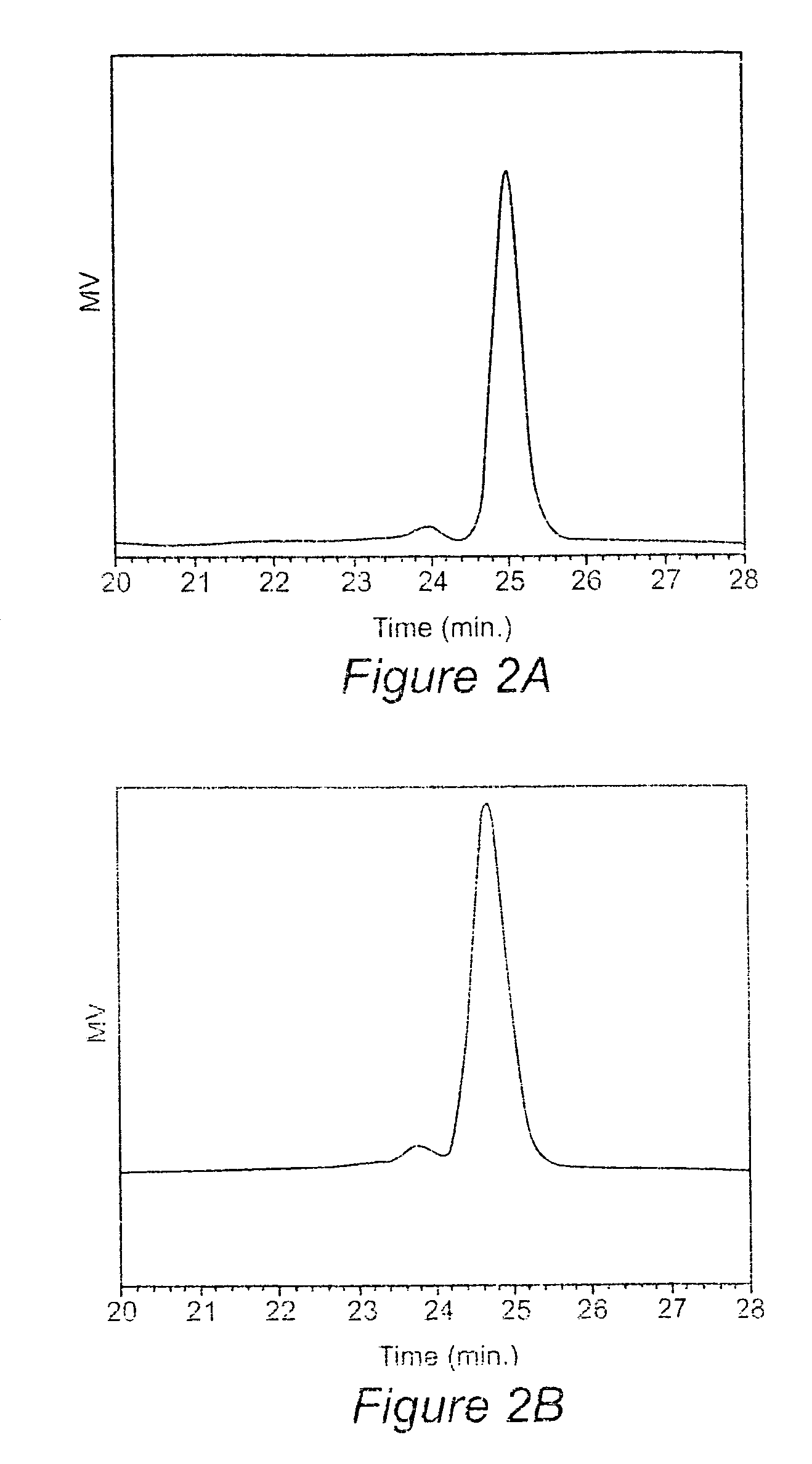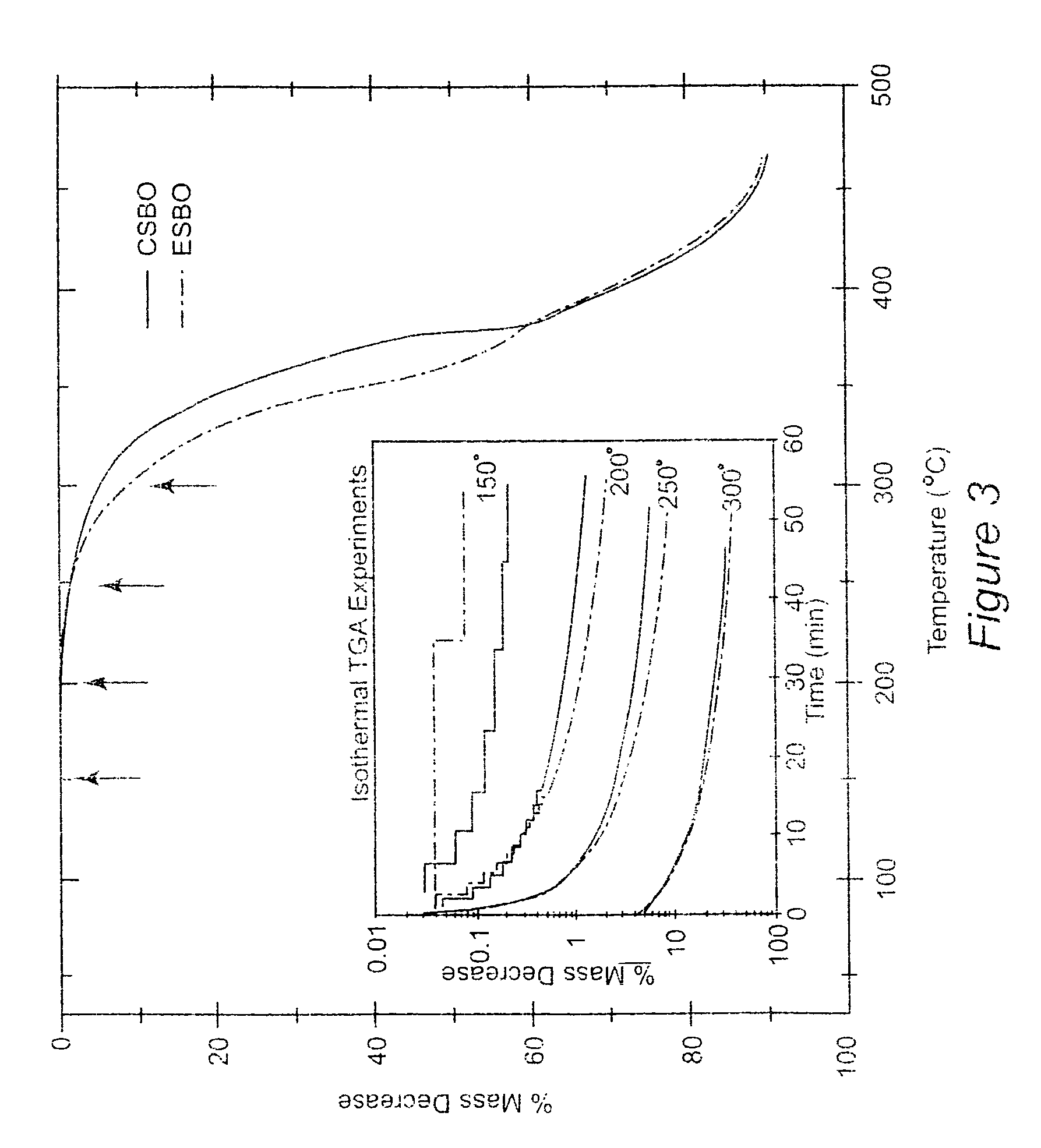Nonisocyanate polyurethane materials, and their preparation from epoxidized soybean oils and related epoxidized vegetable oils, incorporation of carbon dioxide into soybean oil, and carbonation of vegetable oils
a technology of non-isocyanate polyurethane and polyurethane, which is applied in the direction of fatty acid production, fatty acid chemical modification, etc., can solve the problems of more danger, and achieve the effect of high chemoselectivity
- Summary
- Abstract
- Description
- Claims
- Application Information
AI Technical Summary
Benefits of technology
Problems solved by technology
Method used
Image
Examples
experimental example
[0049]Materials
[0050]Epoxidized soybean oil (Paraplex G-62) with a molecular weight of ca. 1000 g / mol and an oxygen content of 6.8% (˜4.2 epoxy groups per triglyceride molecule) was provided by C. P. Hall Co. Carbon dioxide was purchased from Air Products and was used after passage through a Drierite column. Tetrabutylammonium bromide (TBAB), sodium iodide, lithium bromide, benzyltrimethylammonium bromide, Amberlit IR 400(Cl), ethylenediamine (ED), hexamethylenediamine (HMD), and tris(2-aminoethyl)amine (TA) were purchased from Aldrich. Amines were used as received or distilled over KOH prior to use, FTIR spectra were recorded on a Nicolet 510 FT-IR spectrometer. 1H and 13C-NMR spectra were recorded on a Varian Inova 400 (400 MHz) spectrophotometer using tetramethylsilane as an internal standard. GPC profiles were obtained with a Waters SEC equipped with an autosampler 410 RI detector eluted with THF at 40° C. calibrated by polystyrene standards. Viscosity measurements were made at ...
PUM
| Property | Measurement | Unit |
|---|---|---|
| thickness | aaaaa | aaaaa |
| grip-to-grip distance | aaaaa | aaaaa |
| thickness | aaaaa | aaaaa |
Abstract
Description
Claims
Application Information
 Login to View More
Login to View More - R&D
- Intellectual Property
- Life Sciences
- Materials
- Tech Scout
- Unparalleled Data Quality
- Higher Quality Content
- 60% Fewer Hallucinations
Browse by: Latest US Patents, China's latest patents, Technical Efficacy Thesaurus, Application Domain, Technology Topic, Popular Technical Reports.
© 2025 PatSnap. All rights reserved.Legal|Privacy policy|Modern Slavery Act Transparency Statement|Sitemap|About US| Contact US: help@patsnap.com



